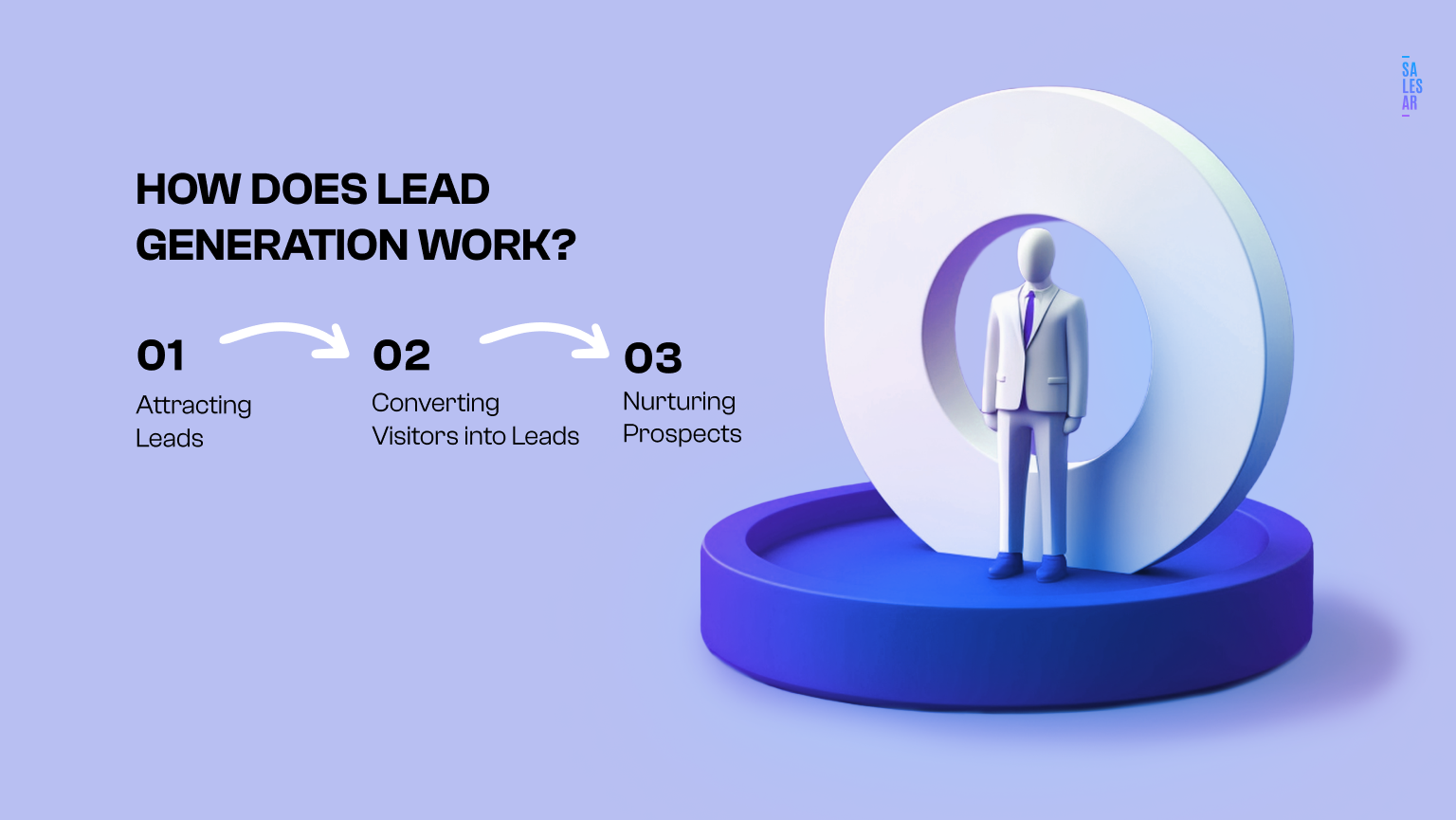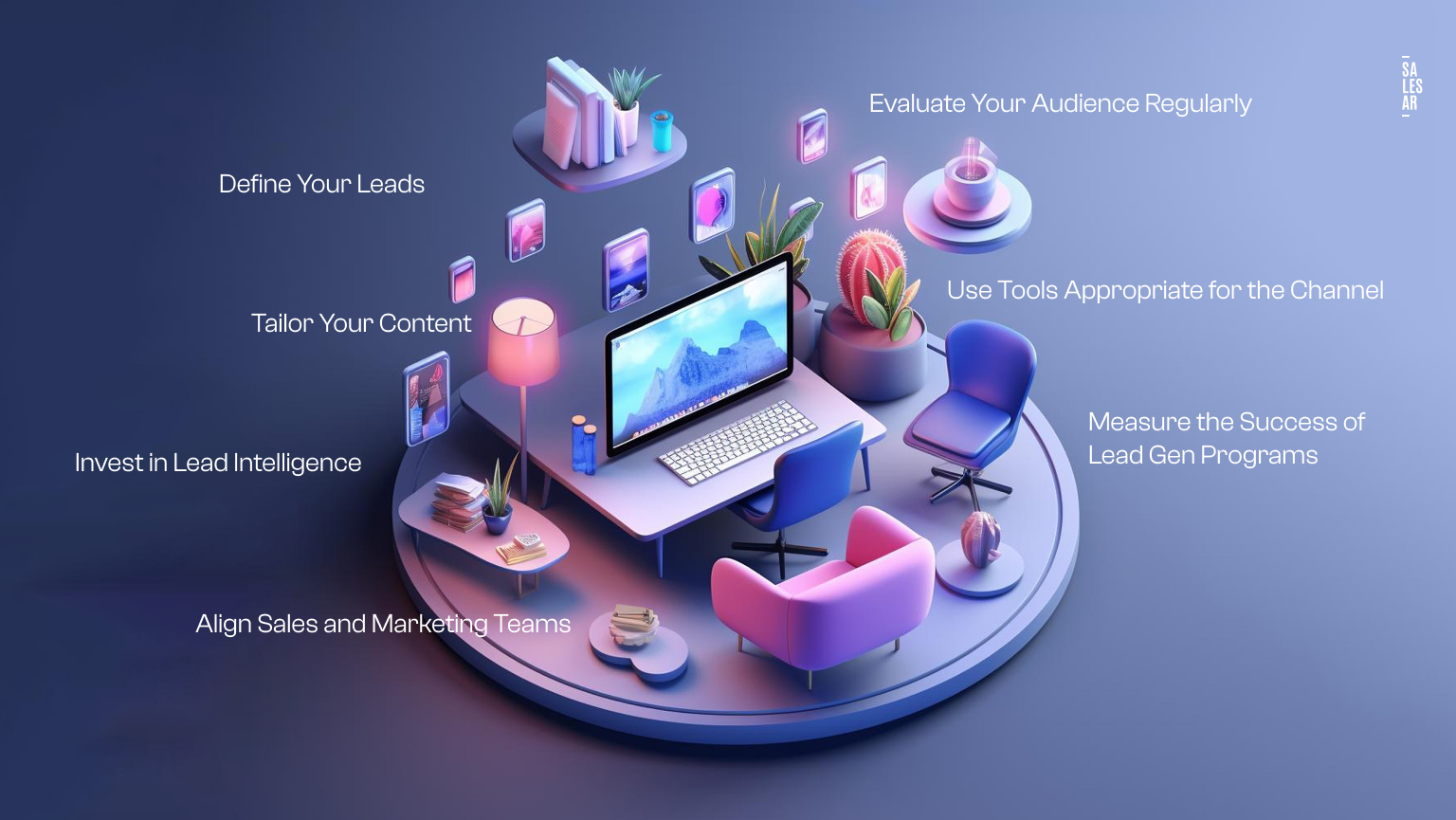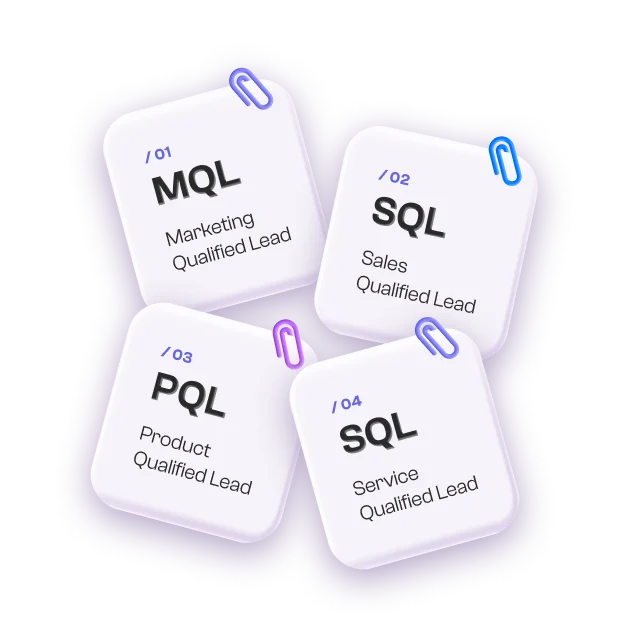Mastering the nuances of lead generation is essential for marketers aiming to propel their businesses forward. This article will explore the concept of lead generation, highlighting its critical role, underlying mechanisms, effective strategies for maximization, and B2B lead generation tips.
What is Lead Generation?
So, what is lead gen? Lead generation embodies the process of attracting and engaging strangers and prospects, transforming them into interested parties who have shown a clear interest in what your company offers, be it a product, service, or solution.
This process is not merely about generating any leads, it’s about generating qualified leads that have a higher likelihood of transitioning through the sales funnel and becoming loyal customers. It involves a multifaceted approach, leveraging a variety of marketing tactics and channels, from content marketing, search engine optimization, and social media campaigns to more direct approaches like email marketing and paid advertising. Each of these channels serves as a potential touchpoint for engaging with prospects, nurturing their interest, and guiding them closer to a buying decision.

Why is Lead Gen Important?
The significance of a lead generation solution cannot be overstated for several key reasons. It lays the groundwork for:
Building Awareness – It’s the initial step in making potential customers aware of your brand, not just as a name but as a solution to their problems or a means to fulfill their needs. This stage is about visibility and presenting your brand as a thought leader and a credible source of information or solutions.
Driving Engagement – Beyond mere awareness, lead generation is about creating meaningful interactions. It’s about establishing a dialogue with prospects, whether through insightful blog posts, interactive social media content, or personalized email communications. This engagement is crucial for building relationships and trust with potential customers.
Increasing Conversions & Sales – One of the key benefits of lead generation is the ability to convert prospects into customers. By effectively capturing and nurturing leads, businesses can significantly increase their conversion rates, turning interest into action, be it a purchase, a subscription, or a contract.
Fostering Growth – A steady stream of high-quality leads is vital for business expansion. Lead generation is not just about filling the top of the sales funnel, it’s about ensuring a consistent flow of potential clients who are interested and capable of purchasing, thus securing the company’s revenue and growth prospects in the long term.
How Does Lead Generation Work?
Lead generation functions as the engine of a company’s marketing and sales strategies, orchestrating a series of steps designed to capture and nurture potential customer interest. This process is multifaceted, incorporating a blend of digital tactics and personalized approaches to not only attract but also convert and retain prospects. Here’s an expanded look:
Attracting Leads – The journey begins with attraction – drawing potential leads to your brand through a variety of channels. High-quality, engaging content serves as the cornerstone of this phase, providing value and addressing the needs and challenges of your target audience.
Social media platforms offer a vast playground for interaction and engagement, allowing brands to connect with their audience in a more informal and relatable manner. Search Engine Optimization ensures that your content is visible and ranks well in search engine results, making it easier for prospects to find you. Paid advertising campaigns, whether through social media ads, pay-per-click on search engines, or display networks, can amplify your reach and target specific demographics or interests more directly.
Converting Visitors into Leads – Attraction alone is not enough. Once visitors land on your website or engage with your brand, the next step is conversion. This is where well-designed landing pages come into play, offering clear, compelling value propositions and making it easy for visitors to take the next step.
Forms are crucial at this stage, designed to capture essential information without overwhelming prospects. Calls-to-action must be strategically placed to guide visitors towards conversion, whether signing up for a newsletter, downloading a whitepaper, or scheduling a consultation.
Nurturing Prospects – After initial interest is captured, the nurturing phase is pivotal. Email marketing allows for regular, personalized communication with prospects, delivering targeted content and offers that move them further down the funnel.
Retargeting campaigns can re-engage visitors who didn’t convert initially, reminding them of what they’re missing. Personalized outreach, especially for B2B companies, can make prospects feel valued and understood, significantly increasing the chances of conversion.

What if It Doesn’t Work?
Not all lead generation strategies will hit the mark right away. If results are lacking, it’s a signal to reassess. Maybe your target audience’s needs have evolved, or perhaps the channels you’re using are not where your prospects are active. The message you’re sending might not resonate, requiring a tweak in your approach or offering. Regularly reviewing and aligning your strategies with your audience’s preferences and behaviors is crucial for ongoing success.
What Are the Types of Lead Generation?
There are two primary methods of lead generation:
Inbound Lead Generation – This strategy focuses on attracting leads to come to you. It’s about creating and sharing valuable content through blogs, videos, eBooks, and social media posts. SEO plays a significant role here, optimizing content to ensure high visibility in search engine results. Social media engagement also falls under inbound tactics, encouraging interaction and sharing to build a community around your brand.
Outbound Lead Generation – In contrast, outbound lead generation involves taking the initiative to reach out to potential leads. This includes email campaigns tailored to the interests and needs of specific segments of your audience, making use of LinkedIn’s powerful networking capabilities for targeted outreach. Cold calling and direct mail, although traditional, can still be effective when executed with a personalized touch and a clear understanding of the prospect’s potential needs and interests.
What Is the Lead Generation Process?
The lead generation process goes beyond mere acquisition, focusing on understanding, engaging, and nurturing potential leads through a series of strategic steps. Here’s an expanded insight into each phase of the lead generation process:
1. Define Your Leads
Identifying your ideal customer, or creating buyer personas, is essential to any effective lead generation strategy. This involves a deep dive into understanding not just demographic information but also psychographic data – what motivates them, their challenges, goals, and preferences. This foundational step ensures that all subsequent efforts are aligned with the needs and interests of your target audience, significantly increasing the likelihood of engagement and conversion.
2. Tailor Your Content
Depending on your lead generation methods, tailoring your content to address the specific problems, needs, and interests of your leads at different stages of their buyer’s journey is crucial. This means creating a variety of content types, from informative blog posts and how-to guides to engaging videos and infographics that speak directly to the questions and challenges your personas are facing. By doing so, you establish your brand as a trusted resource and authority in your field.
3. Invest in Lead Intelligence
The more you know about your leads, the better you can engage with them. Investing in lead intelligence tools and platforms provides critical insights into your leads’ behavior, preferences, and engagement with your brand. This data allows for more targeted and personalized outreach efforts, ensuring that your messages resonate and elicit a response. Tools that track website visits, email interactions, and social media engagement are invaluable for gathering this intelligence.
4. Align Sales and Marketing Teams
The synergy between sales and marketing teams is crucial for a seamless lead generation process. Aligning these teams ensures a unified approach to lead management, from the initial attraction to the final conversion. Regular communication and shared goals help in creating a cohesive strategy where marketing efforts feed directly into sales objectives, ensuring that leads are nurtured and handed off smoothly at the right time.
5. Evaluate Your Audience Regularly
Markets evolve, and so do customer needs and preferences. Regular evaluation of your target audience and buyer personas is necessary to stay relevant and effective in your lead generation efforts. This ongoing reassessment helps in adapting your strategies to meet changing market dynamics and ensures that your approach remains aligned with your audience’s current needs.
6. Use Tools Appropriate for the Channel
Different channels require different tools and approaches. Whether it’s utilizing email marketing software for personalized email campaigns, leveraging LinkedIn automation tools for targeted B2B outreach, or employing sophisticated CRM systems to manage and analyze lead data, choosing the right tools for each channel enhances efficiency and effectiveness.
7. Measure the Success of Lead Gen Programs
The ability to measure and analyze the success of your strategies for lead generation is critical. Tracking key performance indicators such as conversion rates, cost per lead, and ROI allows you to gauge your strategies’ effectiveness and identify improvement areas. This data-driven approach ensures that resources are allocated wisely and that strategies are continuously optimized for better results.

How to Improve Your Lead Generation?
Refine Your Targeting – As you gather more data and insights, continuously refine your targeting criteria to ensure maximum relevance and engagement.
Enhance Content Quality – Quality content is more likely to attract and retain interest. Invest in creating compelling, informative, and engaging content that stands out.
Leverage Automation – Automation tools can streamline many aspects of lead generation and nurturing, from email marketing to social media posting and lead scoring.
Test & Optimize – Constantly test different aspects of your lead generation strategy, from headlines and CTAs to landing page designs and email templates. Use the insights gained to optimize your efforts for better performance.
Key Takeaways
- Deep Understanding of Audience – The foundation of a successful lead generation strategy lies in a profound understanding of your target audience. Creating detailed buyer personas that reflect your potential customers’ needs, challenges, and preferences is crucial.
- Strategic Content Tailoring – Content is pivotal in attracting and engaging leads. It should be meticulously tailored to meet the specific needs and stages of the buyer’s journey of your target audience. High-quality, relevant content establishes your brand as a trusted authority.
- Investment in Lead Intelligence – Utilizing tools that provide insights into lead behavior and preferences enables more personalized and effective outreach. This intelligence is key to targeting efforts more precisely and increasing engagement rates.
- Alignment Between Sales and Marketing – A seamless transition of leads from marketing to sales hinges on the alignment and collaboration between these teams. Their unified efforts ensure that leads are nurtured and converted more efficiently.
- Regular Audience Evaluation – The changing nature of markets and consumer behavior necessitates regular reassessment of your target audience and strategies. Staying attuned to these changes ensures your lead generation efforts remain relevant and effective.
- Appropriate Tools for Each Channel – Employing the right tools for each outreach channel maximizes the efficiency and effectiveness of your lead generation efforts. Whether through email, LinkedIn, or other platforms, the right technology can make a significant difference.
- Measurement and Optimization – The success of lead generation programs must be measured against clear KPIs. Regular analysis and optimization based on these metrics allow for continuous improvement and better resource allocation.
- Continuous Strategy Refinement – Lead generation is an ongoing process that benefits greatly from regular testing, refinement, and optimization. Adapting strategies based on performance data and emerging trends keeps your efforts aligned with your audience’s evolving needs.
These takeaways underscore the importance of a comprehensive and adaptive approach to lead generation. For SalesAR, focusing on the quality of leads, rather than just quantity, and constantly refining strategies based on data and insights, are key to generating leads that convert into loyal clients and drive business growth. If you’re looking for more B2B lead generation ideas, you can check out the other articles for valuable info.




